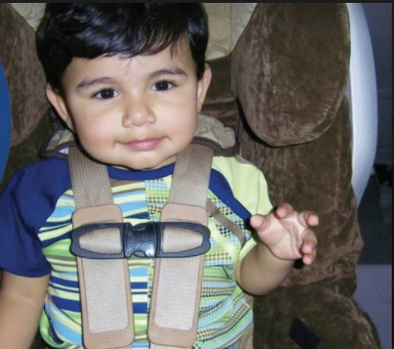Sometimes it seems like you need a college degree to install a child’s car seat. And, in fact, you almost do.
CHP officers take an intensive week-long training to learn how to install the seats and when they check the ones drivers have installed, they find that three out of four are done incorrectly.
“A week-long class? I thought it was ridiculous,” said CHP officer Chris Miceli. “How hard can it be? But there was a lot to learn. We had four days of classroom and one day of instruction with ‘live’ seats.”
Miceli said car accidents are the number-one killer of children nationwide, and although there is no statistic for how many of those are related to poorly installed seats, having them installed correctly is important to save lives.
“If you know they are the number-one killer, we need to make sure the seats are installed properly,” he said. “It makes it that much more important.”
Between 2010 and 2014, 18,116 kids died in car crashes in the U.S., according to a report in the Journal of Pediatrics. Of those, the study says, 43 percent were improperly restrained or not restrained at all.
For five years the local CHP office has offered its Halloween safety check at Gilroy Gardens, even giving a free pass to the theme park to the first 100 people to show up. This year’s event is Saturday 10am to 2pm in the main parking lot at Gilroy Gardens at 3050 Hecker Pass.
Officers will check seats for recalls and expiration as well as check that the seat you are using is the appropriate one for your child’s height and weight. They will teach how to reinstall seats properly.
The top 10 problems officers find, according to Miceli, are:
- The seats are too loose. There should be no more than one inch side to side of movement when the seat is strapped in.
-
Forward facing seats are not using the top tether anchor.
-
The shoulder harness is too high or too low, depending on which way the child is facing. If the child is facing forward, the straps should come out at the shoulders or above. If the child is facing backwards the straps should be at or below the shoulders.
-
Forward facing seats come in using the rear facing belt path and vice versa.
-
The lap and shoulder retractors are not put in pre-collision lock mode. When you install a car seat using lap and shoulder belt, after you route the belt and buckle it and before you tighten it, you need to pull the seatbelt all the way out until it can’t come out anymore. You don’t want it to move a little and lock. You want it to be locked already.
-
The retaining clip at wrong position across child’s chest. The clips that tie the two shoulder harnesses together should be at the nipple line, at the bottom of the armpits.
-
The recline angle of rear facing seat is not set correctly. It should be at 45 degrees for angle of recline for rear facing seat. Most seats have a level bubble on side. Often they find babies are not reclined enough.
-
The 5-point harness too loose. Check it between the top of the clip that joins the two harnesses. If you can pinch that strap and grab it with three fingers, it’s too loose. If you can strum it like a musical instrument too loose.
-
Latch anchors are fastened upside down.The buckles have a tag saying “This Side Up” but often people twist them the wrong way. Check it.
-
Insufficient clearance between back of car seat and passenger seat of vehicle when seat installed rear facing.
There should be a hand’s distance between the front seat and the car seat. The front row seats should never touch the car seat. Rear facing seat in front or rear end collision are designed to pivot downward if you have an impact. They flex down to floor cradling the baby. They get as far down as they can go and spring back up. If you wedge the passenger seat, it takes away that feature.
Babies should be behind the passenger seat because drivers need to put their seats as far back as possible because their airbags come out of the steering wheel, while passenger airbags are further from the passenger, in the dashboard.
If you can’t make it to the event, you can make an appointment for CHP’s regular monthly checks by calling(408) 848-2324. Find more information about the laws: https://www.chp.ca.gov/programs-services/programs/child-safety-seats














